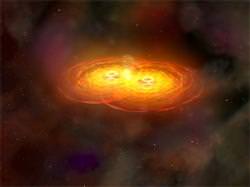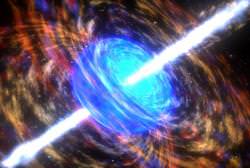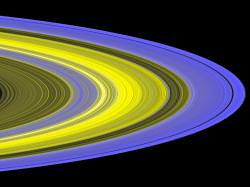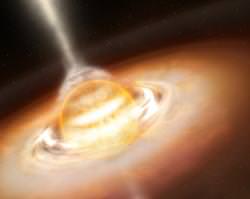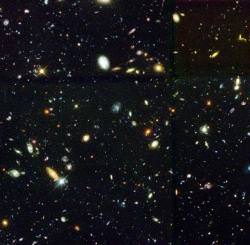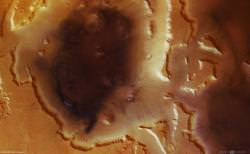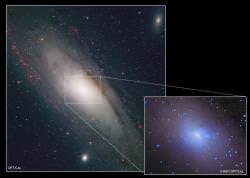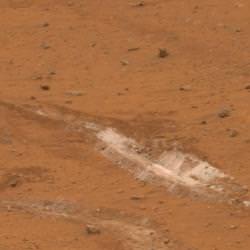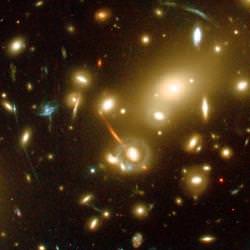The huge majestic spiral galaxy we live in today was built up over billions of years through mergers with other galaxies. And in 5-10 billion years from now, we’ll merge together with the Andromeda Galaxy. Since both galaxies are thought to have a supermassive black hole at their centre, what will happen when they merge together? One possibility is that one black hole will get ejected from the combining galactic core at a tremendous velocity.
Astronomers have suspected this kind of interaction might happen. The velocities and gravitational forces are so great during a black hole merger, that one of the objects could be flung out like a slingshot. It was believed that the black hole would be stripped of its accretion disk as it’s flung out into the galaxy, so it would be impossible to detect.
But new calculations by Avi Loeb, a researcher with the Harvard-Smithsonian Center for Astrophysics, indicate that an ejected black hole might be able to bring its accretion disk along for the ride. And the radiation pouring out of this disk might be detectable here on Earth.
If the calculations are correct, the two merging black holes will be releasing torrents of gravitational radiation in the direction they’re orbiting. The momentum from this radiation will give one black hole a kick in the opposite direction, ejecting it at 16 million km/hour (10 million mph). At this speed, a black hole would traverse its galaxy in just 10 million years.
According to Loeb, as long as the gas within the disk was orbiting at a speed far great than the black hole ejection speed, it would follow the black hole on its journey. It could last a few million years, consuming this disk of material, and blazing brightly enough that powerful telescopes could detect it. The host galaxy would seem to have a double quasar.
Original Source: CfA News Release

